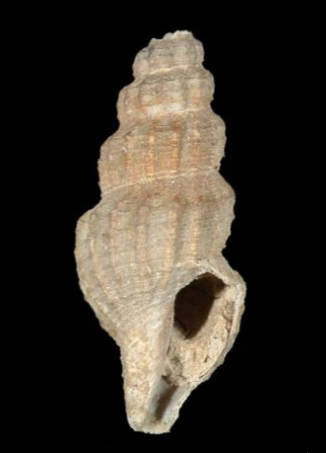|
Pleurotomella Circumvoluta
''Pleurotomella circumvoluta'' is a species of sea snail, a marine gastropod mollusk in the family (biology), family Raphitomidae. Description The shell grows to a length of 12 mm. The shell has a strong superficial resemblance to ''Glyphostoma gratula'' (Dall, 1881), but with a totally different protoconch, and with differences in details of Sculpture (mollusc), sculpture. It also has not the minute punctation. The color of the shell is white or ashy gray. The protoconch and its whorls are heliciform, with a sculpture of slightly raised lamellae waved backward from the middle point of the periphery both ways. Under these are also fine revolving raised lines. The shell contains 9 Whorl (mollusc), whorls. The remainder show a transverse sculpture of from sixteen to (on the body whorl) eighteen narrow raised riblets passing entirely over the whorls, quite faint on the band and only obsolete on the Columella (gastropod), columella and the siphonal canal. Beside these the lines ... [...More Info...] [...Related Items...] OR: [Wikipedia] [Google] [Baidu] |
Robert Boog Watson
Robert Boog Watson FRSE (26 September 1823 – 23 June 1910) was a Scottish malacologist and minister of the Free Church of Scotland best known as the author of the report on the Scaphopoda and Gastropoda collected during the H.M.S. ''Challenger'' expedition to survey the world's oceans from 1873 to 1876. Watson also described various Opisthobranchia from Madeira. Life He was born in Burntisland in Fife, the son of the Rev Dr Charles Watson DD (1794-1866) of Burntisland and Isabella Boog. His brother, Sir Patrick Heron Watson was an eminent surgeon and a pioneer of modern dentistry. The family moved permanently to Edinburgh around 1840, living at 19 Royal Terrace on Calton Hill. He was educated at Edinburgh Academy. He served as Chaplain to the Highland Brigade during the Crimean War, and later in Madeira. In 1858 he was living with his wife in Bombay in India. He was elected a Fellow of the Royal Society of Edinburgh in 1862. During his stay in Edinburgh he lived wit ... [...More Info...] [...Related Items...] OR: [Wikipedia] [Google] [Baidu] |
Whorl (mollusc)
A whorl is a single, complete 360° revolution or turn in the spiral growth of a mollusc shell. A spiral configuration of the shell is found in numerous gastropods, but it is also found in shelled cephalopods including ''Nautilus'', ''Spirula'' and the large extinct subclass of cephalopods known as the ammonites. A spiral shell can be visualized as consisting of a long conical tube, the growth of which is coiled into an overall helical or planispiral shape, for reasons of both strength and compactness. The number of whorls which exist in an adult shell of a particular species depends on mathematical factors in the geometric growth, as described in D'Arcy Wentworth Thompson's classic 1917 book ''On Growth and Form'', and by David Raup. The main factor is how rapidly the conical tube expands (or flares-out) over time. When the rate of expansion is low, such that each subsequent whorl is not that much wider than the previous one, then the adult shell has numerous whorls. When the ... [...More Info...] [...Related Items...] OR: [Wikipedia] [Google] [Baidu] |
Pleurotomella Circumvoluta 002
''Pleurotomella'' is a genus of sea snails, marine gastropod mollusks in the family Raphitomidae. Description (Original description by Verrill) As at present understood, this genus is intended to include those species which have a rather broad and very distinct subsutural band, crossed by excurved lines of growth corresponding to the form of the posterior sinus of the lip, which is situated a little below the suture and is always pretty well-developed, but is sometimes broad and shallow, and at other times narrower and very deep. The outer lip is always thin and sharp, without any appearance of a varix, nor is there any deposit of callus on the body whorl, in front of the aperture. The siphonal canal is well developed, generally constricted at the base and somewhat elongated, and usually but slightly curved. In a few of the species, doubtfully referred to hie genus, it is short and wide. The columella-margin is more or less sinuous. The protoconch differs in sculpture, an ... [...More Info...] [...Related Items...] OR: [Wikipedia] [Google] [Baidu] |


